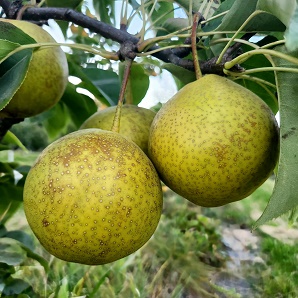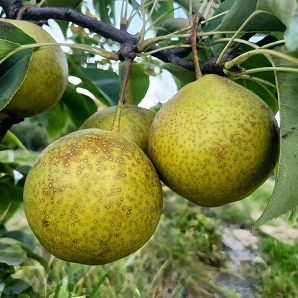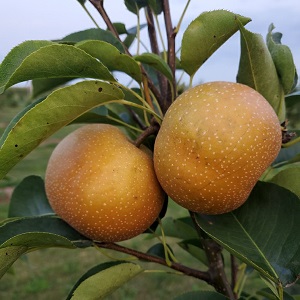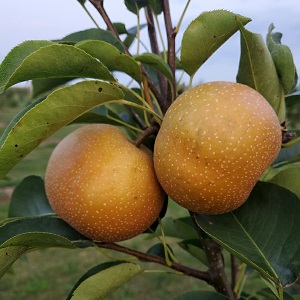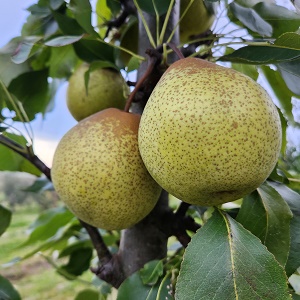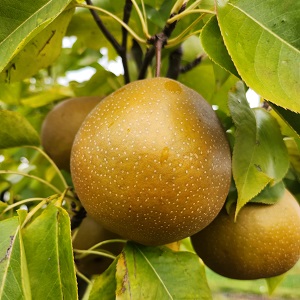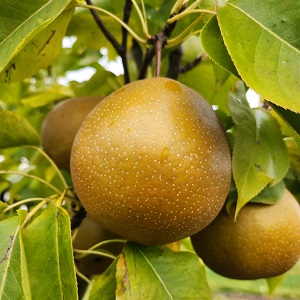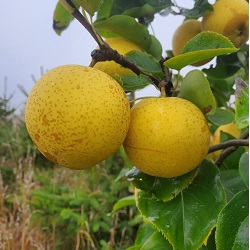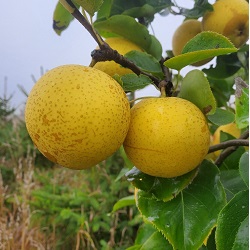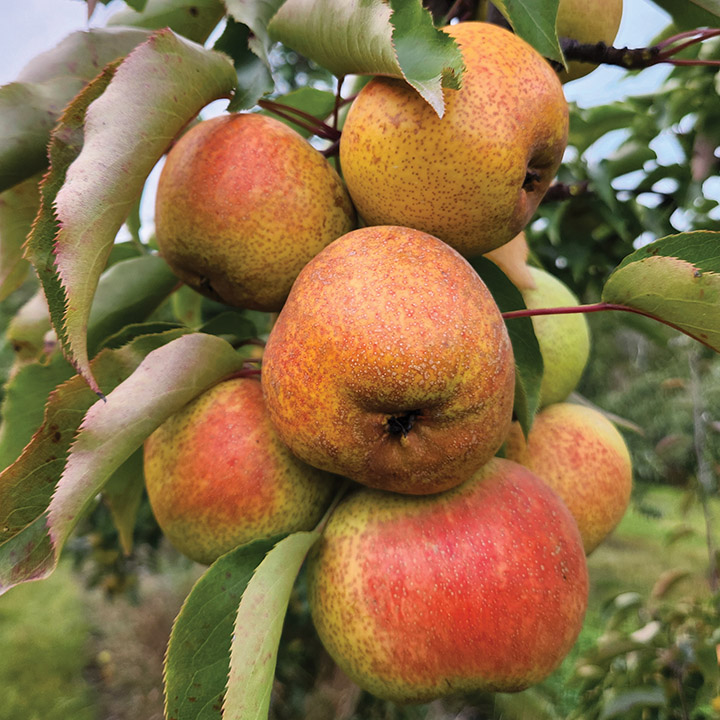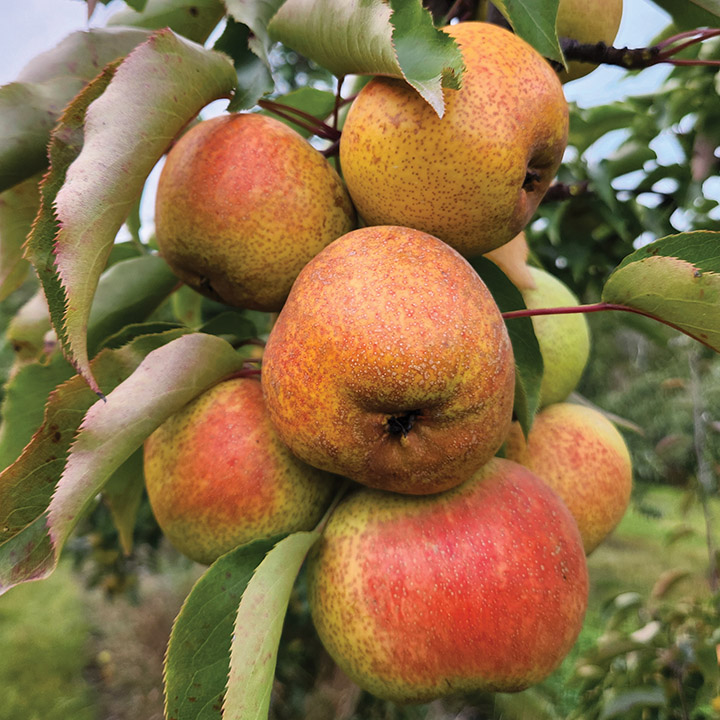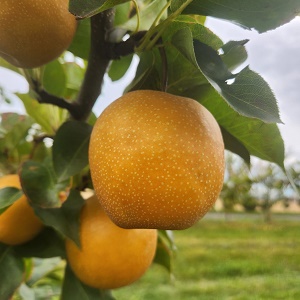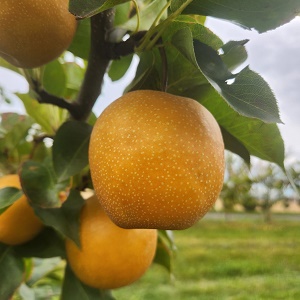Search
Category
New Items!
Special Searches
Harvest
Zone
Rootstock
Pollenizer
Stock Status
Asian
Asian Pears (Pyrus pyrifolia)
Asian pears are crunchy and very juicy with a refreshing flavour totally different from European pears. The Chinese and Japanese have been growing them for 3000 years. In the California Gold Rush of 1849, they were introduced to America by Chinese miners. In recent years they have become better known and quite popular. Asian pears are very productive and should be hand-thinned for better fruit size and to avoid limb breakage. In contrast to European pears, they are best when thoroughly ripened on the tree. To avoid bruising, handle gently when picking. Storage life is outstanding, some in excess of six months. Asian pears develop the best flavour in a hot summer, so plant in a somewhat sheltered location with full sun exposure. The trees are more compact than European pear trees and offer great visual appeal with their masses of white blossoms in the spring followed by waxy green leaves that turn into a spectacular array of fall colours.
Pollination Tip
All European (regular) and Asian pears will pollinate each other providing their bloom times overlap. Generally you can go by the expected harvest time, meaning only the very early and the very late might not be compatible with each other. However, since Asian pears, on average, bloom earlier than Europeans, you might pair an early European with a mid or late Asian.
1-2m (3-6') bareroot trees
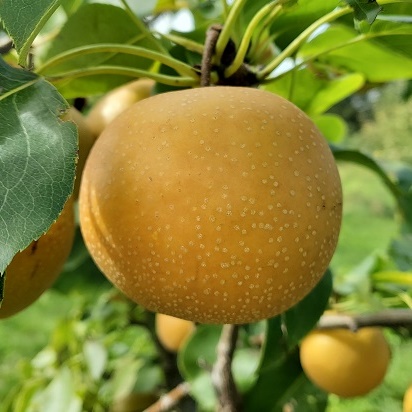
Asian Pear : KOSUI Large Semi-Dwarf (OHxF97)
$53.95
